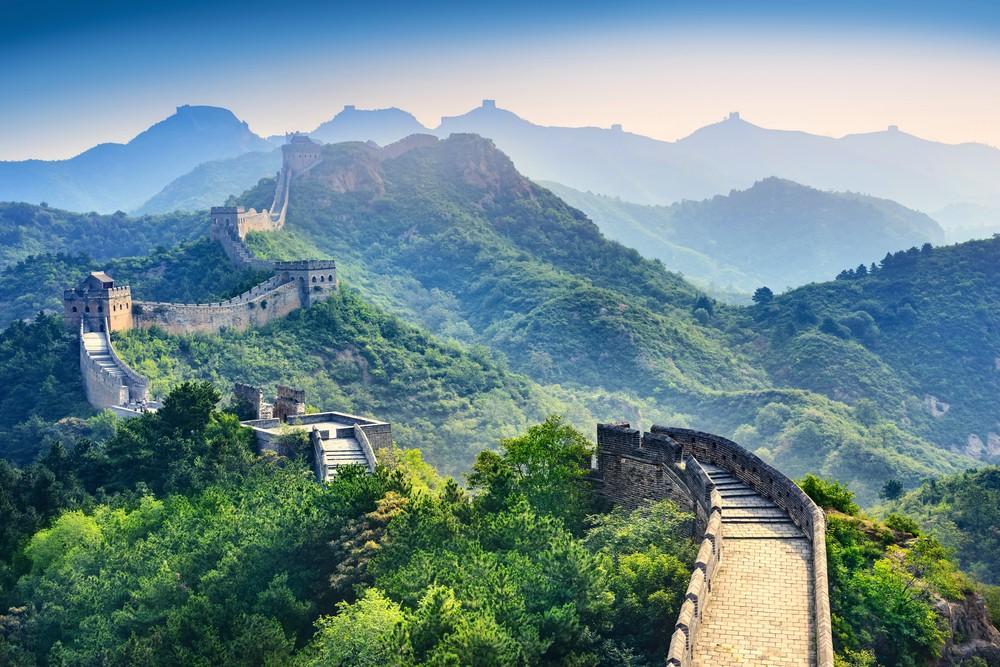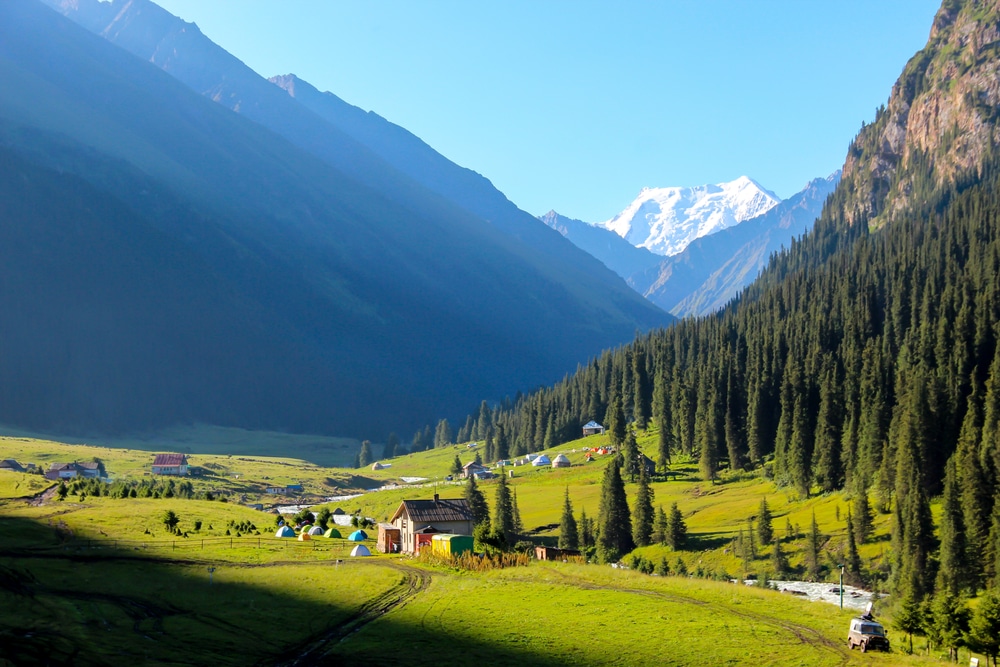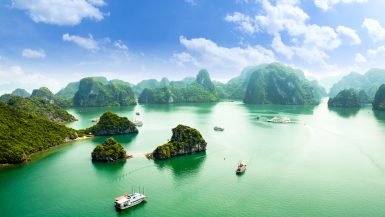If you visit Japan , you have to make at least a detour to Tokyo (also Tokyo or Japanese 東京), the country’s largest metropolis and at the same time the capital. The city, formerly called Edo, is home to about 9.5 million inhabitants on 622 km² and is considered one of the most densely populated cities in the world.
Tokyo – city with a long history
If you are interested in the history of Tokyo, you have to go back to 1446. In that year, a castle was started, which gave the city its original name Edo (River Gate Mouth). Initially surrounded by only a few fishing villages, the city grew rapidly over the next few centuries and became the country’s second cultural and political center of power after Kyoto .
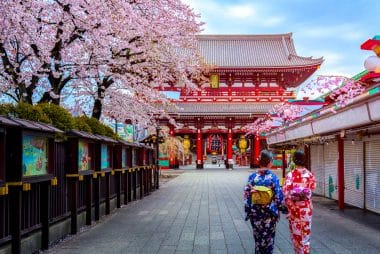
In 1868, the shogunate with its shoguns, which had been endowed with a lot of power until then, was abolished, the residence of the Japanese emperor (Tenno) was moved to Edo, the former Edo Castle became an imperial palace and the city received its name Tokyo, which is still valid today, which can be translated as “eastern capital”. During the Second World War, almost half of the city was destroyed. After the turmoil of war and the subsequent occupation by the Americans, the metropolis finally experienced an economic boom that made it the undisputed economic center of the country.
Mixture of historical and modern sights
Although many historic buildings were destroyed in the last World War, Tokyo today still presents itself as a successful mixture of modern architecture and traditional building and garden culture. Among the most important sights of the city are above all modern buildings such as:
- Tokyo Skytree (at 634 meters high, it is the second tallest building in the world)
- Tokyo Tower (332-meter-high, bright red and white steel tower that serves as a broadcasting tower for radio and television stations)
- Tokyo Dome (a baseball stadium that resembles a flying saucer in shape)
- Tokyo Metropolitan Government Building (243-meter-high Tokyo Prefectural Building)
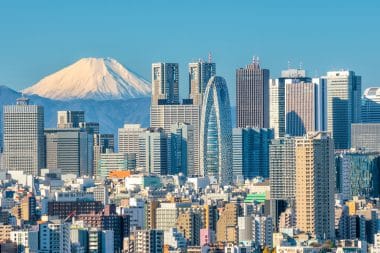
In addition to these modern sights, Tokyo also has a variety of traditional buildings to visit. Of course, this includes the temples of the metropolis. Here is especially the Sensō-ji (in Japanese characters 浅草寺) or as it is officially called Kinryūzan (Japanese 金龍山). It was built as a Buddhist temple. It is not only Tokyo’s oldest, but also the most important temple complex, which can be traced back to the year 645. Another tourist highlight is the Imperial Palace (Japanese 皇居, Kōkyo). It is located in the heart of Tokyo, nestled in a park with gardens that can be visited. The actual palace area can also be visited by appointment as part of a guided tour, although the buildings themselves are not allowed to be entered. A popular place for locals is Ueno Park, which is open to the public and is home to various shrines, the University of the Arts, the Tokyo Prefectural Museum of Arts , and the National Museum . The latter is the largest and oldest museum in Japan.
Tokyo as a transport centre
In the field of public transport, Japan is best known for the Shinkansen , which can reach speeds of up to 330 km/h, the high-speed train that is one of the fastest trains in the world, along with the French TGV (320 km/h), the German ICE (368 km/h) and the Velaro (up to 403 km/h), which runs in Spain and Russia . Tokyo is, so to speak, the hub for the various routes of the Shinkansen. In addition, the city has two large airports in its urban area and the metropolitan region, with Tokyo-Haneda Airport , which today only handles national air traffic, and Narita International Airport . The network of 300 km of urban motorways and numerous main roads was completely renewed before the 1964 Olympic Games. However, the city administration is striving to reduce private car traffic in the inner city area by providing a good range of public transport services and to relieve the never-sleeping metropolis. There is a large network of buses, state-owned or private commuter train lines , as well as various metro lines. The latter extend over more than 300 km, making them the largest metro network in the world.
Tip: If you are a fan of public transport and visit Tokyo, you should not use the subway during rush hour in the morning and late afternoon. At these times, the carriages are so incredibly crowded that it can be difficult to get a seat. After all, the Tokyo subway, with a total of 12 lines, is the busiest subway in the world.
Tokyo earthquakes are part of everyday life

As is well known, Japan and Tokyo are located in one of the most active earthquake regions in the world. For this reason, the population is used to the fact that the earth wobbles slightly every now and then. There are also regular exercises in which the correct behavior is practiced. For vacationers, such an earthquake can be quite a frightening experience. However, the Japanese are considered to be a technically very advanced people and so almost all newer buildings in the city have been erected earthquake-proof and can withstand even more severe quakes without much effort. Nevertheless, it makes sense to follow the instructions that you receive from the hotel or railway staff, for example, during such an event.
The climate in Tokyo
Tokyo’s weather is characterized by a so-called subtropical east-side climate. This means that summers in the city are extremely hot and humid with 30 degrees Celsius or even more. Winter, on the other hand, is usually mild and temperatures rarely drop below 0 degrees Celsius, even at night. The rainy season, which lasts from the end of June to mid-July, is very short and is characterized by mostly short and heavy rain showers. This will be followed by a persistently hot and humid period until about the end of August. Japan is also known for its typhoons, which pass over the island in September or October and usually last little longer than 24 hours. The months between mid-March and early May are a special time, because then is the time of the cherry blossom (Japanese Sakura) in Japan. It always begins in Tokyo in mid-March and ensures that almost all Japanese flock to the gardens and parks of Tokyo for Hanami, the “looking at blossoms”. Spring and early summer in particular are suitable for a trip to Tokyo in terms of weather.


